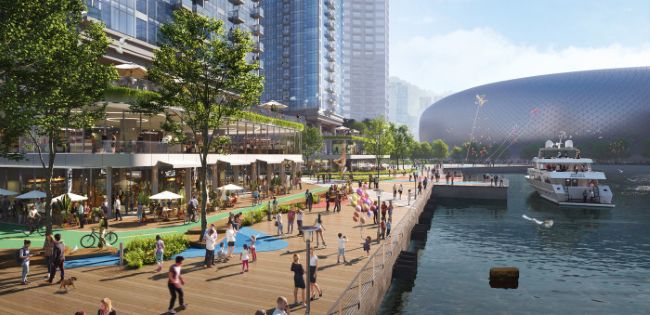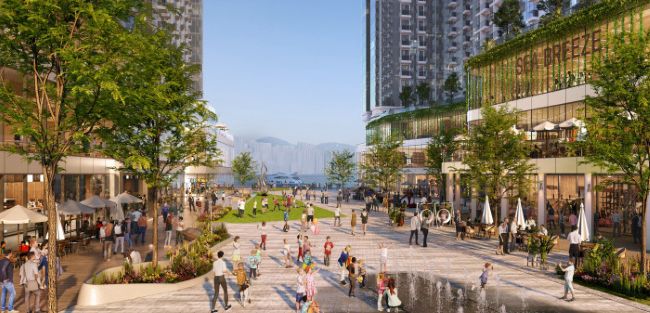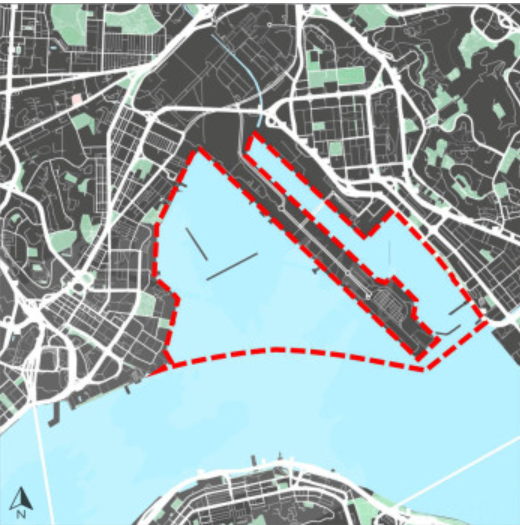|
|||
| HONG KONG | <Search <Archives <eBulletin Next> | ||
September 10, 2025 Transforming the Victoria Cove Area into a world-class destination The Urban Renewal Authority (URA) has unveiled a transformative vision for the Victoria Cove Area through the To Kwa Wan Harbourfront Study (TKWHS), a masterplan that integrates the cove, waterfront, and inland zones into a cohesive urban ecosystem. Drawing inspiration from global benchmarks such as Sydney, Oslo, and Tokyo Bay, the initiative aims to elevate Kowloon City’s waterfront into a world-class destination by leveraging its unique geographical assets and latent development potential.
Planning Framework: The “Cove–Waterfront–Inland” Model
The TKWHS adopts a holistic planning model that segments the area into three interconnected zones:
Cove: The sheltered bay and adjacent waterbody
Waterfront: The shoreline and promenade spaces
Inland: The urban hinterland extending to Lung Shing, Kai Tak, and Ho Man Tin
This tri-zonal approach ensures that development is not isolated to the shoreline but extends into the urban fabric, creating a seamless interface between land and water. The study spans nearly 800 hectares, encompassing key nodes such as the To Kwa Wan promenade, Kai Tak Sports Park, and the Ko Shan Theatre green belt.
 Strategic Direction 1: Utilising Existing Water and Harbourfront Spaces
The first pillar of the plan focuses on activating underutilised water spaces with minimal infrastructural investment. The calm inner harbour waters near Kai Tak and Ma Tau Kok are ideal for low-impact recreational activities such as:
- Kayaking and canoeing
- Floating platforms for performances and concerts
- Shoreline viewing areas for water-based events
A particularly innovative proposal involves repurposing inactive barges within the sheltered bay of To Kwa Wan. These barges could be transformed into:
- Floating restaurants and cafes
- Outdoor concert venues
- Light and shadow art installations
- Recreational amenities like swimming pools or floating beaches
Additionally, breakwaters could be enhanced with public art installations, turning them into photogenic landmarks for boat tours and waterfront visitors.
Strategic Direction 2: Creating Spaces for Diverse Waterfront Development
Beyond utilising existing assets, the second direction calls for new spatial interventions to diversify the waterfront experience. This includes: Small-scale reclamation projects, now permissible under the amended Protection of the Harbour Ordinance, to build:
- Piers
- Viewing platforms
- Pedestrian walkways
Strategic Direction 3: Strengthening Inland–Waterfront Connectivity
The third strategic direction addresses the integration of inland urban zones with the waterfront, a critical factor for sustained vibrancy and economic viability. The URA’s past renewal efforts in To Kwa Wan and Lung Shing provide a foundation for this connectivity push.
Key proposals include:
- Upgrading pedestrian and road networks to facilitate movement between inland areas and the bay
- Integrating three major road systems to channel foot traffic toward the waterfront
- Enhancing the built environment to support mixed-use development and public realm improvements
(Images: URA)
 Global Benchmarking and Local Potential
Kowloon City’s harbourfront is positioned as a high-value urban asset, with spatial and environmental qualities comparable to leading global bay cities. The TKWHS envisions Victoria Cove as a multi-functional, inclusive, and vibrant urban waterfront, capable of hosting:
- Cultural events
- Recreational activities
- Tourism attractions
- Mixed-use real estate developments
Conclusion
The Victoria Cove Area plan is more than a waterfront beautification project—it’s a comprehensive urban strategy that reimagines Kowloon City’s relationship with its harbour. For building and real estate professionals, it offers a blueprint for integrated, sustainable, and high-impact development, with clear pathways for innovation, investment, and community engagement.
(Reported by Building.hk)
|
|


